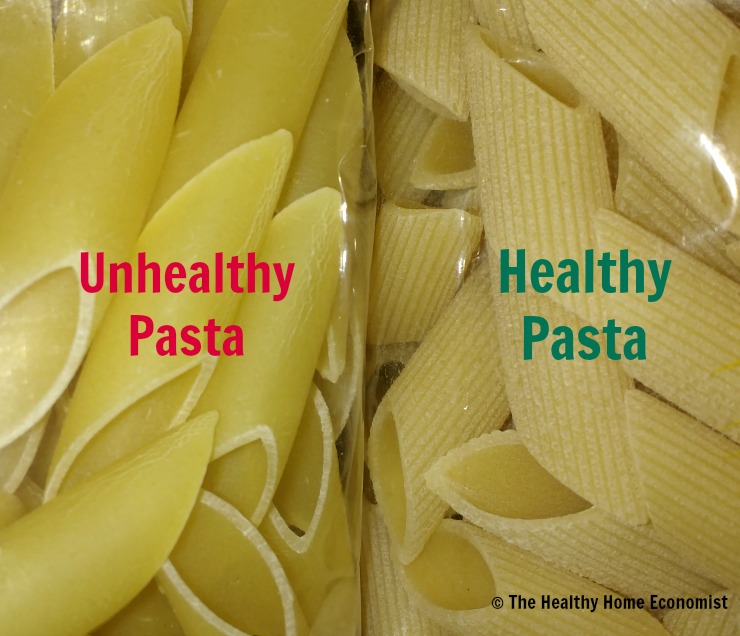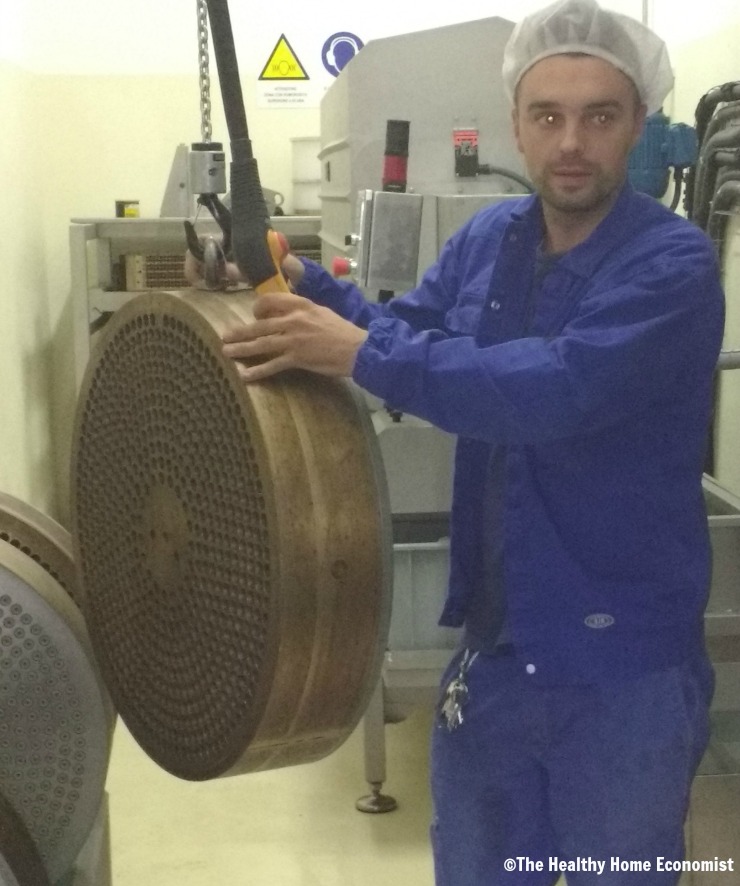
Is the concept of healthy pasta an oxymoron for fans of traditional, nutrient-dense diet? For the longest time, I thought so but was happy to find out otherwise.
My change of heart occurred while attending one of two annual Jovial Foods Culinary Getaways in Tuscany. I was privileged to attend the excursion focusing on einkorn, the only completely unhybridized wheat left on the planet. I hope to attend the gluten-free getaway sometime in the near future!
This trip was truly an unforgettable experience where I was able to fully relax and enjoy the amazing locale and also broaden my knowledge significantly about the history of a variety of traditional foods including that modern, sometimes addictive favorite – pasta.
As I mentioned earlier, I’ve not been much of a pasta fan in the past. I never ordered it at restaurants and rarely made it at home. This is because the wheat and other grains used to make industrialized pasta are not properly prepared via sour leavening, soaking or sprouting.
Traditional preparation methods, particularly for grain-based dishes like pasta, are important to render the nutrition bio-available, enhance digestibility, and prevent damage to the intestinal tract. Hence, the pasta available today in the supermarket should be viewed as highly processed foods best not eaten on a regular basis.
This view of pasta completely changed while in Tuscany. I had the rare opportunity to tour a small, family-owned pasta factory in Lucca. It was here that I learned how healthy pasta is made (yes, it’s possible) that is (gasp) soaked before shaping among other exciting revelations.
Want to buy healthy pasta too and start eating it again without a worry in your home? Here’s what you need to know.
Most Modern Pasta is Shaped in Teflon
The most shocking thing I learned touring the pasta factory in Lucca is that the convenient and profitable way to make pasta today is to mold the dough into various shapes using a Teflon die (think meat grinder but for pasta dough) and then cut in accordance with the desired length.
Can you believe it? Most health-conscious people long ago tossed their Teflon bakeware and cookware, so to find out the pasta they buy is being shaped in this toxic material would no doubt be a startling disclosure.
Teflon is the DuPont brand trademark for a synthetic polymer called polytetrafluoroethylene, a member of the perfluorinated chemical “family” of PFCs. According to Environmental Working Group (EWG):
PFCs have been found in nearly all Americans tested by federal public health officials. Chemicals from this family are associated with smaller birth weight and size in newborn babies, elevated cholesterol, abnormal thyroid hormone levels, liver inflammation and weakened immune defense against disease (1).
While the greatest health risks from Teflon come from exposure to the highly toxic fumes emitted during heating (ingesting particles that flake off scratched Teflon isn’t toxic because the solid flakes are inert), most people would no doubt prefer not to support companies that use these types of toxic materials that are damaging to the environment.
Old Fashioned Bronze Dies Making a Comeback
The encouraging news is that forward-thinking pasta companies are choosing to use old fashioned bronze dies to shape pasta instead of Teflon.
Jovial Foods is one of them and uses a bronze die for artisanal extrusion of every type of einkorn and gluten-free pasta on offer.
How to know if the pasta you buy was made with Teflon or bronze?
It’s quite simple actually. All you have to do is examine the pasta closely and note whether the surface of the pasta is rough or smooth and shiny. If it is smooth and shiny, a Teflon die was used. If it is rough and textured, a bronze die was used. See the picture above as an example.
As a bonus, the rough texture of pasta made with a bronze die holds the pasta sauce better, making for a tastier dish. Industrialized pasta made in Teflon-coated dies doesn’t “carry” the sauce very well because the smooth pasta actually repels the sauce.
It is important to be aware that there is a flipside. Pasta shaped in a bronze die absorbs more water when cooked and tends to overcook more easily than Teflon-drawn pasta. So, choosing to use artisanal pasta instead of industrialized brands will require that you watch the cooking pasta more carefully to ensure you don’t get a mushy mess.
Below is a picture of a bronze die which I snapped during my tour of the pasta factory. The pasta maker is holding the bronze die and the Teflon die on the left side of the picture is a light grey color. This particular factory made pasta for several different companies some of which insisted on using cheap Teflon dies. As a result, I was able to observe both industrialized and old fashioned pasta being made which was a rare opportunity indeed!

Why Would Pasta Companies Use Teflon Instead of Bronze?
If you are wondering why a pasta manufacturer would choose Teflon instead of bronze in the first place for making its pasta, it’s not hard to figure out why.
Using Teflon speeds up the pasta making process significantly. By some estimates, industrialized pasta can be made from start to finish in a half a day. In addition, a bronze die lasts for approximately 400 work hours with a maximum of 1500 hours before it needs to be replaced. Teflon dies, on the other hand, are cheaper to make and last longer (2).
Hence the reason why Teflon replaced bronze – to maximize profitability by speeding up the process and reducing costs.
The bottom line is avoiding pasta that has a smooth sheen or lacks a rough surface. Pasta with this type of appearance screams, “I was made in Teflon!”
Another trick is to examine the pasta in your hand. If it is brittle and lightweight, these are additional indications of poor quality.
Sturdy looking pasta with ridges or a rough surface is what you are looking for.
Healthy Pasta That is Traditionally Soaked
Another exciting revelation from my tour of the Lucca pasta factory is that pasta made from traditionally prepared grains is available today.
Remember I mentioned above that I have avoided pasta for nearly two decades because the grain used to make it was not digestible and if eaten frequently, had the potential to damage the intestinal tract in sensitive individuals.
I was overjoyed to learn, however, that Jovial Foods makes a very healthy brown rice pasta using a process that soaks the grains for 24 hours prior to cooking the grain and shaping the dough in a traditional bronze die! What’s more, both the einkorn and brown rice pasta are low temperature dried so the delicate proteins in the grain are not denatured or damaged in any way (this minimizes the chances of an allergic response). In comparison, industrialized pasta making focuses on speed with high heat drying the favored approach, another reason not to buy it!
Extending the pasta making process by a full 24 hours no doubt reduces profitability considerably, but Jovial Foods is all about doing the right thing, not the expedient thing.
Since I’ve returned from the culinary getaway, my family has been eating and greatly enjoying pasta again (Jovial Foods’ brand since I am sure of how it is made – call the manufacturer of the brands you use to double check their processing methods), once or twice a week instead of once a month (if that) in years past.
Are you excited to learn like I was that healthy pasta is not an oxymoron? Will you be eating more pasta in the future now that you know that some companies are reverting to the old pasta making ways and eschewing industrialized practices?
By the way, this is my favorite marinara red sauce recipe to use with this wonderful soaked pasta!







How to make pasta at home please?
Jovial now offers organic cassava pasta. Do you think that’s OK to eat in moderation? Thanks for any info.
“Old Fashioned Bronze Dies Making a Comeback”
I read that headline, and then I thought, “Oh, I didn’t realize that a metal could actually die!” LOL. 🙂
I usually eat a lot of pasta recipes & it gives me a great sense of awareness.
Thanks for this post.More power to you & have a healthy life.
I was happy to find that my local super market actually sells the Jovial rice pasta! They also sell a Jovial pasta sauce also. I just wanted to look it up on your site to make sure it is good to eat. I am hoping also to eventually get some einkorn flour so we can have some yummy healthy bread!
The title of your article is misleading. As noted in your article, Teflon is inert, and ingesting any particles is harmless (i.e. Teflon is not toxic). Overheating cookware in the kitchen has nothing to do with pasta manufacturing. The products that you are advocating sound great, and it’s nice to support companies making traditional products. Teflon production also has environmental concerns. However, you do not list any reason why the pastas produced with Teflon molds are unhealthy.